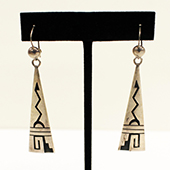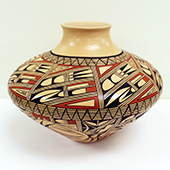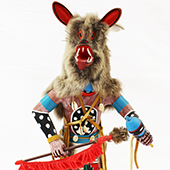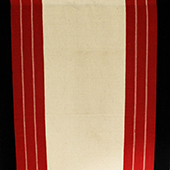Basketry
Like other tribes of the Southwest, the Hopi have been using plant materials to create baskets and other objects for about 2,000 years.
Basket weaving is an integral part of the daily and ceremonial life of the Hopi. Baskets play an important role in many religious and social ceremonies like the annual corn harvest, rainmaking rituals, and rites of passage. They are also used in the preparation and serving of traditional foods.
Hopi basket are made from rabbit brush, sumac, dune brush, and yucca. Traditionally, natural dyes were used to create colors, though eventually these were replaced by synthetic dyes. Today, many basket makers have returned to using natural dyes.
Hopi basket makers only use three basic weaving techniques: plating, wicker, and coiling. Each Hopi mesa is famous for a specific weaving technique. On Second Mesa, women specialize in coil weaving. The specialty of women on Third Mesa is wicker weaving. Plaiting is used by women on all three mesas.
Common forms created by Hopi basket makers include plaques, sifters, burden baskets, prayer feather baskets, and water bottles. Other forms like deep coiled bowls and baskets were developed for sale to outside markets.
Two examples of what is commonly called a plaque because of its almost flat shape can be seen in this exhibit. Hopi on the Second Mesa call them poota, but they are called yungyapu on Third Mesa. Plaques are the most common form of Hopi basketry made today. Many are made for sale to non-Hopi, but an even greater number never leave the reservation.
Plaques play an important role within the Hopi social structure because they serve as links between families and clan members. Basket making skills, techniques, and knowledge of plant materials continue to be passed from generation to generation, from mother to daughter, granddaughter, or niece. Each generation adds to the shared knowledge.
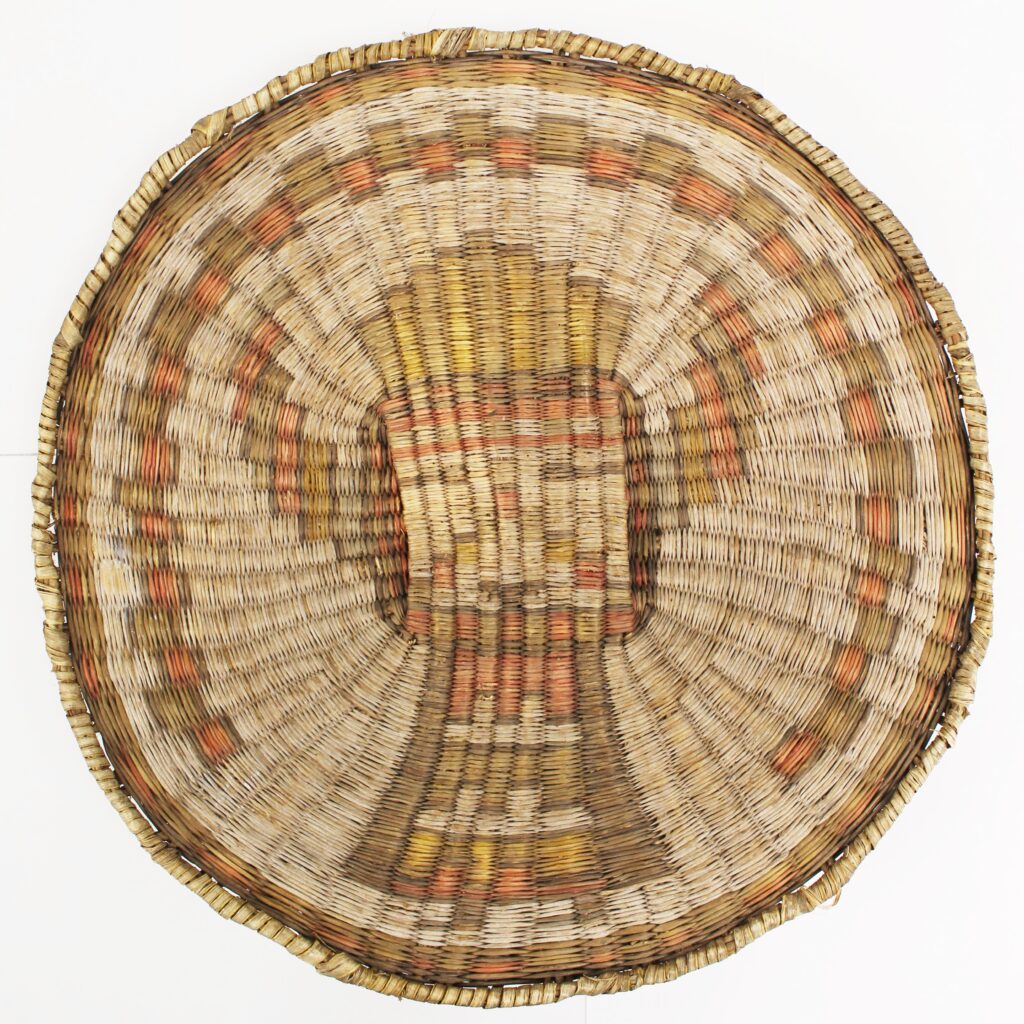
Plaque
1982.E.02
The image on this plaque is a Corn Maiden Katsina. She represents the prayers of the Hopi for a good corn harvest. She gives of herself to sustain and feed her children. This plaque is from Third Mesa.
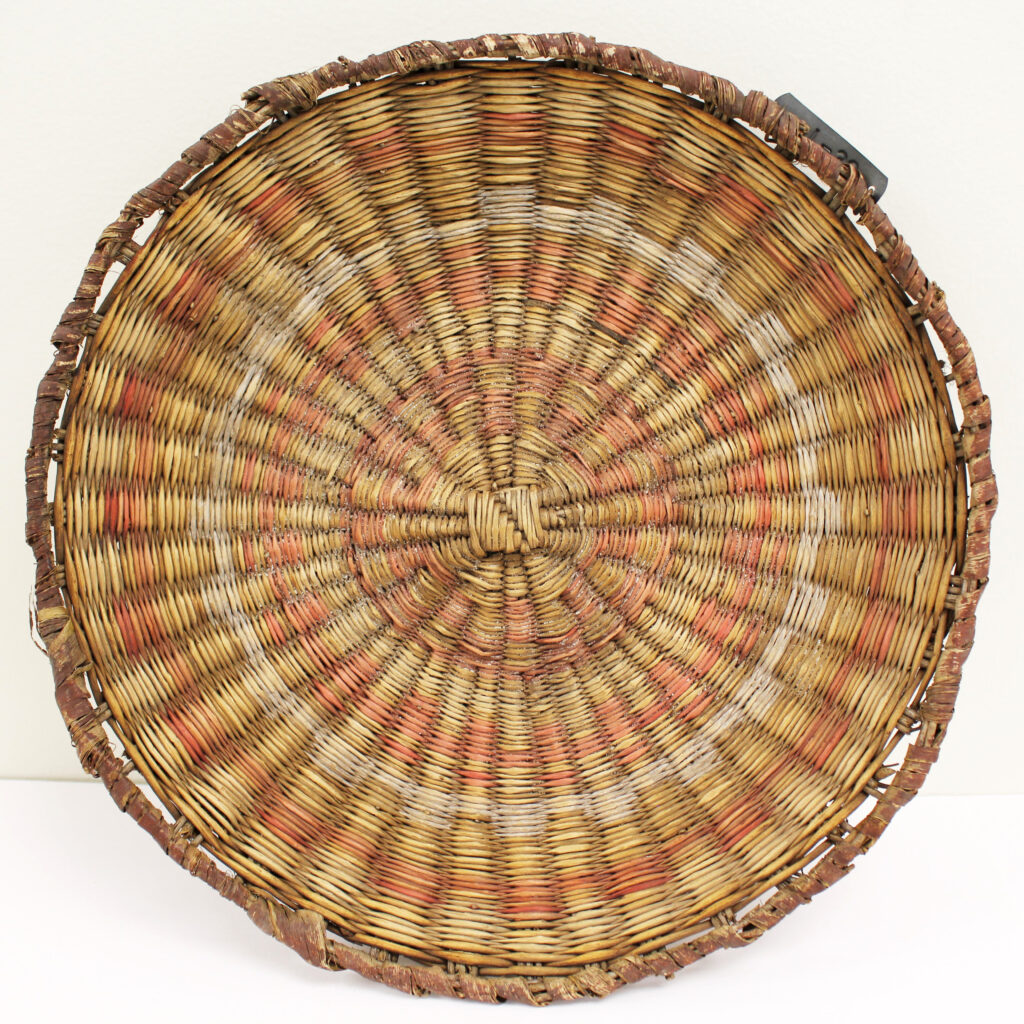
Plaque
1983.E.387
Plaques like this one are given Hopi women as thank you gifts. They are used at weddings, harvest ceremonies, and during initiation rites for Hopi girls. A newborn girl receives a plaque as a gift that she will use throughout her life.
Explore the other sections of this exhibit:
